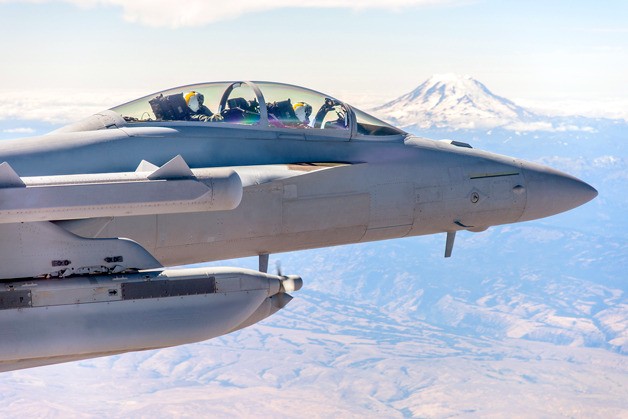Aviators who fly the F/A-18 Hornet and EA-18G Growler are reporting problems with air contamination as well as loss of oxygen and pressurization during flight, and at least one lawmaker wants the Navy to conduct an independent review of the problem.
Rep. Niki Tsongas, a Democrat from Massachusetts who sits on the House Armed Services Committee, inserted language into the National Defense Authorization Act that — if approved — would require Navy Secretary Ray Mabus to initiate a review of “physiological episodes” affecting aircrew of the jets, such as hypoxia and decompression sickness, and the efforts of the Navy and Marine Corps to prevent and mitigate these events.
At a congressional hearing in February, Tsongas and House Armed Services Committee chairman Mike Turner from Ohio pointed to an uptick in the number of incidents involving on-board oxygen generating systems, a critical life-sustaining system for pilots at high altitudes.
Problems with similar systems several years ago grounded the F-22 fleet. The Air Force found F-22 pilots were experiencing hypoxia, diminished availability of oxygen to the body tissues which leads to dizziness and confusion.
The Navy Times released a report last week that showed physiological episodes rising from around 15 in 2009 to more than 110 in 2015.
The article identified VAQ-129 — based at Naval Air Station Whidbey Island — as one of the hardest-hit squadrons. As of Tuesday, they have had seven reported episodes since October. That’s because it’s a fleet replacement squadron with 50 Growlers, far more than the average squadron.
That uptick in reported episodes doesn’t mean there are more — it means aviators are doing a better job of reporting them, said Cmdr. Jeanette Groeneveld, spokeswoman at Commander Naval Air Force Pacific in Coronado, Calif.
The Navy is well aware of the problem, she said.
This issue is the No. 1 safety concern of her boss, Commander of U.S. Naval Air Forces Vice Admiral Mike Shoemaker, the “air boss” in charge of all naval aircraft on the West Coast, she said.
“We’re very focused on finding a solution to this problem,” she said. “We’ve invested a lot of brainpower and people.”
The air boss oversees a physiological episode team that collects data, investigates incidents and coordinates with technical experts to find solutions.
The Navy is encouraging pilots to pay attention and report any incidents — even events as minor as fingers tingling. They also provide extensive training to pilots and flight officers on the hazards of physiological episodes and all aircrew repeat from memory emergency procedures prior to flight, she said.
By press time, Groeneveld wasn’t able to provide a breakdown of how many reported episodes were more serious. Since the start of the fiscal year Oct. 1, there were 79 total episodes reported, with 24 of those involving Growlers.
NAS Whidbey is the home of the Navy’s tactical electronic attack squadrons flying the Growler.
The Navy has made a number of mechanical changes to the jets since 2009, but the problem may be caused by multiple systems, which makes pinning down a solution difficult, she said.
The multi-pronged approach the Navy is taking makes the jets safe to fly, she said.
“If this was a risk that would rise to that level of concern, we would down the aircraft,” she said.



